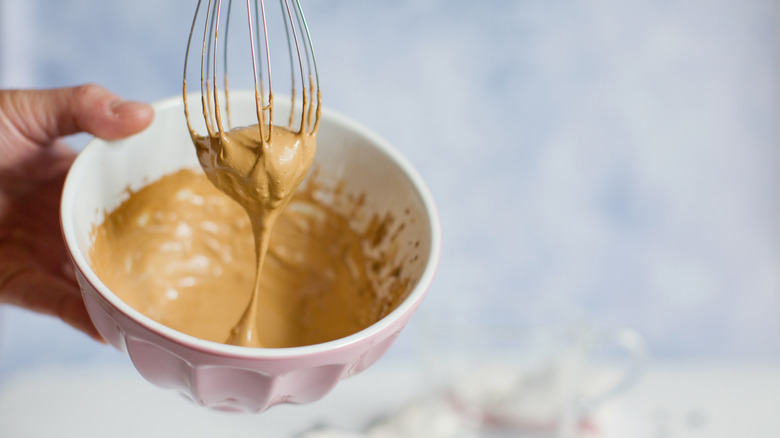The Reason Dalgona Coffee Works So Well, According To A Scientist
The year 2020 was full of TikTok food trends. There was cloud bread with its fluffy rainbow dough, pancake cereal with its bite-sized bits of syrup-doused goodness, and there was baked feta pasta with its drool-worthy cheesiness. But the OG TikTok craze wasn't food at all, but rather a beverage — whipped coffee. Also known as Dalgona coffee, it's what started the fad of social media-inspired eats and drinks.
Dalgona coffee — which actually first became popular in South Korea back in the 1970s — is made by whipping together instant coffee, granulated sugar, and water and then pouring the fluff on top of a glass of milk (via Korea Travel Post). The result? A drink that's as aesthetically pleasing as it is refreshing and delicious. But what makes it so frothy, so light, and, well, so perfect? Turns out there's real science behind the drink all your favorite TikTokers are obsessed with. Here's how it works.
A chemical process occurs when you whip the coffee
While Dalgona coffee might seem like a magical trick — after all, it's an Instagram-worthy drink that even the most beginner barista can make in just a few minutes — there's a scientific explanation for how it all works. According to chemist Tom Kuntzleman, it's a process similar to that of whipping egg whites for a meringue. "The beating process unfolds the protein strands into linear chains," he explained to Popular Mechanics. "The beating process allows air bubbles, pushed into the mixture...to interact with the hydrophobic portion of the protein. The protein chains become scrambled together, and air gets trapped inside, making a foam."
This is exactly what happens when you whip together the instant coffee, sugar, and water, as well. Instant coffee is important as it's easier to hydrate than regular grounds, but the granulated sugar also adds to the overall fluffy effect, Science Meets Food explains. "Sugar adds viscosity, thickening the coffee phase," the blog says. "This makes these 'liquids' flow a lot slower, while also potentially slowing the foam's collapse, keeping your drink frothy longer."

